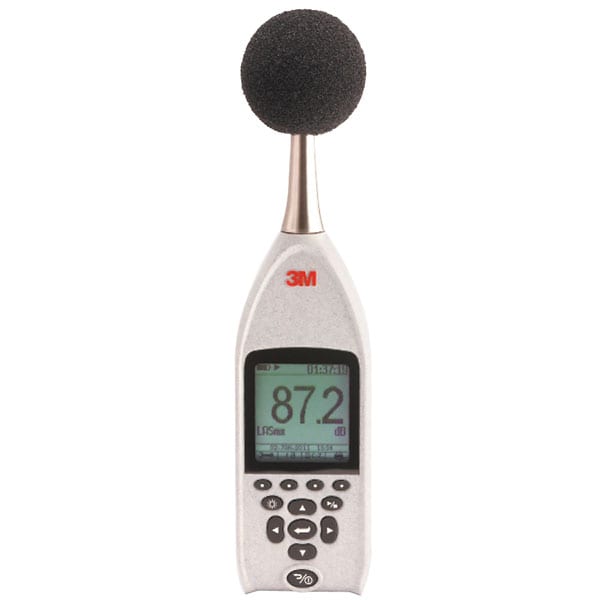Noise Monitoring: 29 CFR 1910.95(d)(e)(f)
OSHA requires employers to perform noise monitoring when employee noise exposure “may equal or exceed an 8-hour time-weighted average (TWA) of 85 dB.”
OSHA defines two methods for monitoring noise levels:

1. Area Noise Sampling
A sound level meter is used to take general measurements of noise levels in a facility. These measurements can be documented in a noise map or a table showing the exposures in each area. This method is most accurate when noise levels are fairly steady and employees are fairly stationary.

2. Personal Noise Sampling
Using a dosimeter, a worker’s complete noise exposure over an extended time is recorded and a TWA is determined from the recording. Not all employees are required to participate in dosimetry. A representation of employees from every area and shift can and should be included. This method is most accurate when noise levels are intermittent or fluctuate and/or employees move around during the shift.
Employer Information
OSHA does not specify a time schedule for conducting noise monitoring. Instead, employers are required to repeat noise surveys whenever there is a change in processes, procedures, or exposure time that may lead to changes in employee noise exposures.
Many companies choose to conduct surveys periodically (once every year or two) to ensure that all exposed employees are included in their hearing conservation programs.
Clear visible signs stating that hearing protection is required should be posted in areas determined to be at or above the Action Level.
Browse our other OSHA-compliant services:
1. Noise Monitoring
29 CFR 1910.95(d)(e)(f)
2. Audiometric Testing
29 CFR 1910.95(g)(h)
3. Hearing Protectors
29 CFR 1910.95(i)(j)
4. Education and Training
29 CFR 1910.95(k)(l)
5. Record Keeping
29 CFR 1910.95(m)
